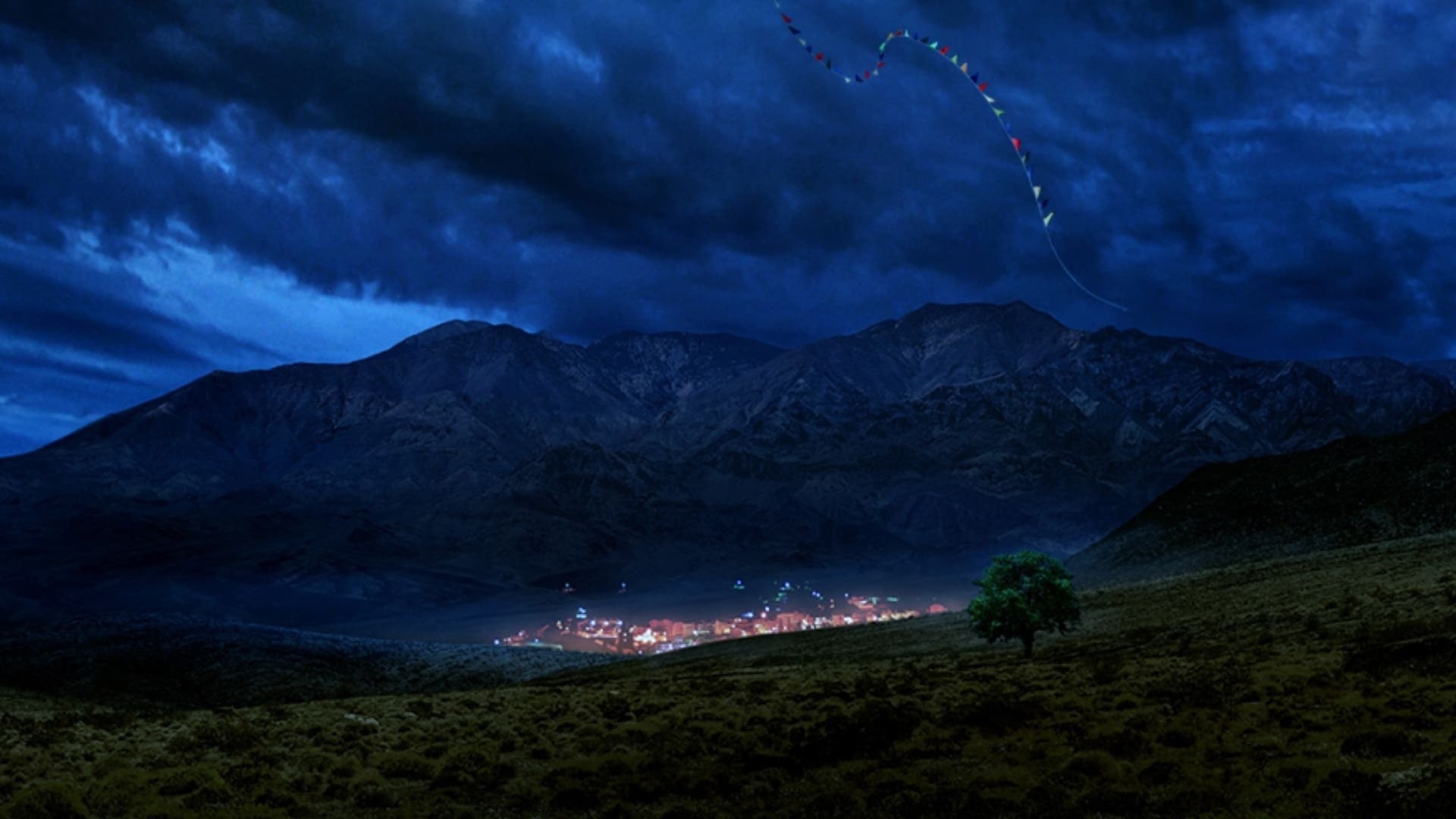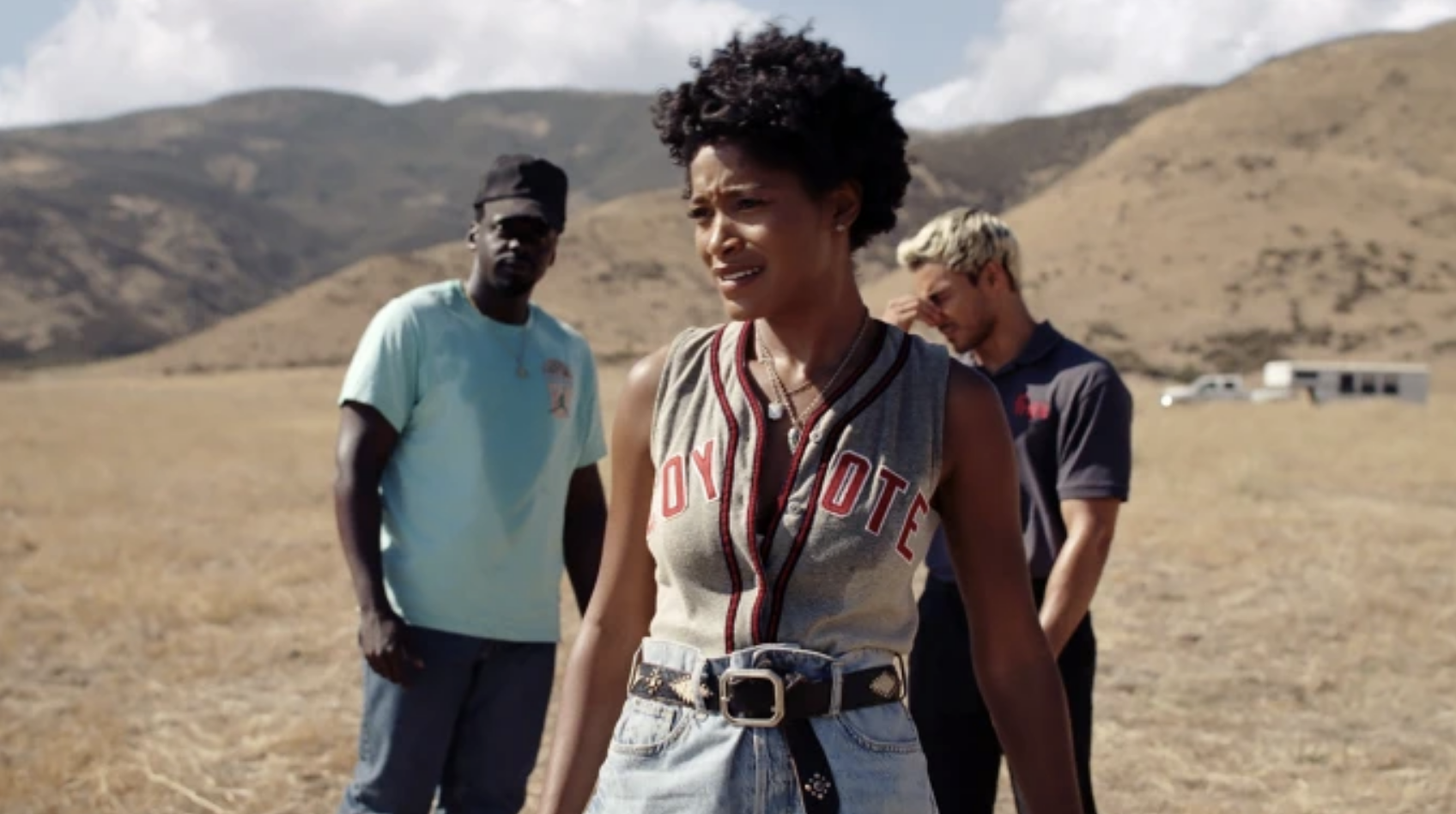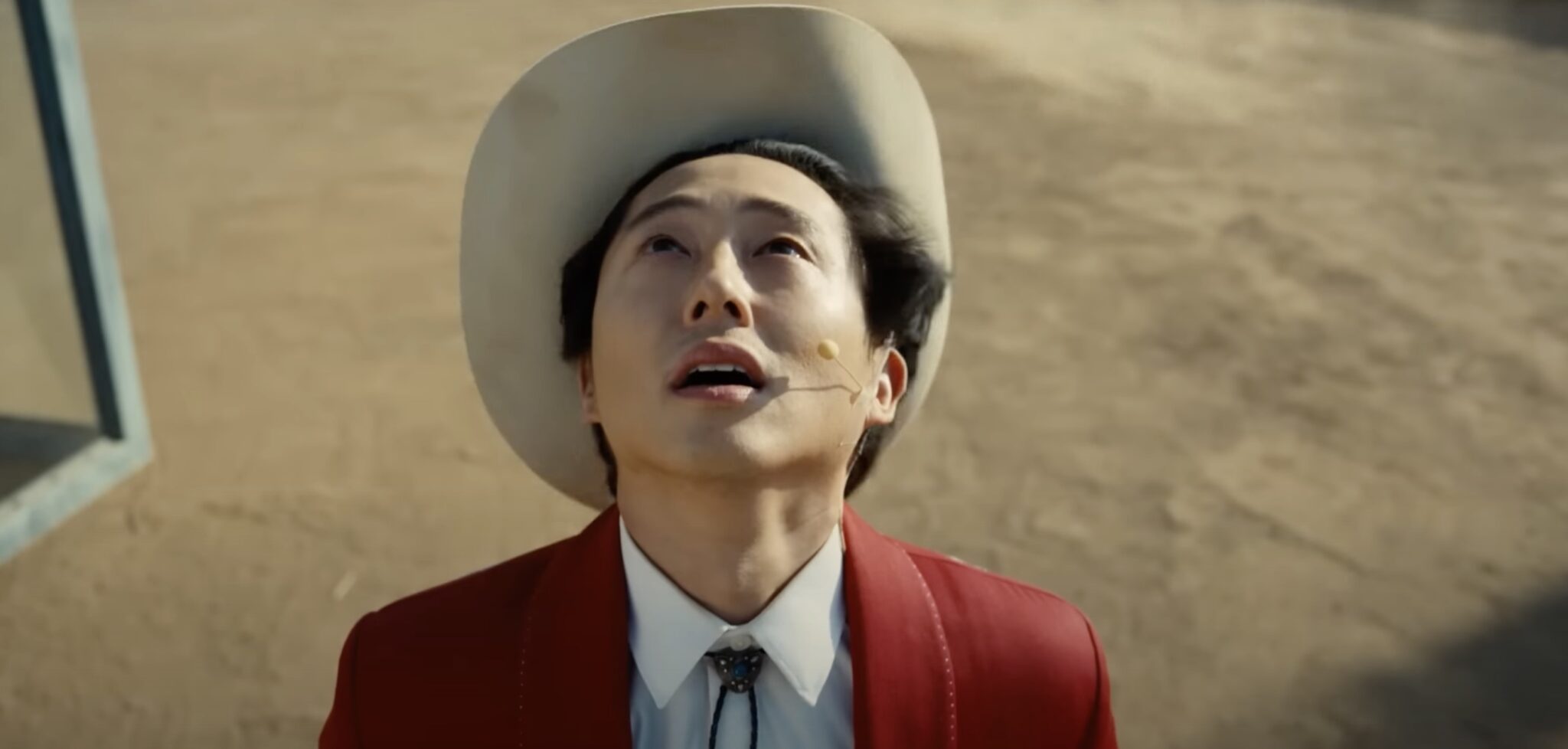It’s been easy to fret about Jordan Peele’s path to possibly becoming the next M. Night Shyamalan, given his interest in science fiction horror that might be described as containing twists. Nope won’t change that potential career trajectory for anyone who worries about it. However, the film has a visual mastery that embraces you in Peele’s sense of awe over his subject matter – which, in true Shyamalan style, it’s best not to spoil. What Nope is about has certainly crept out, to some degree, but readers may wish to assess their own preferred levels of surprise before reading this review, despite my intention to tiptoe around the plot.
The Shyamalan similarities are not the ones that come most to mind when watching Nope, a film that, sure enough, does have things in common with Shyamalan’s Signs. More generously, it reminds a person of the underappreciated Steven Spielberg masterpiece War of the Worlds, and if that’s not a charitable comparison for your particular sensibilities, maybe the parts reminiscent of Paul Thomas Anderson by way of Robert Altman will better resonate. There’s some Magnolia in this film too. No cinematic reference should come as a surprise in a movie set in the mountainous areas outside Los Angeles, with its thoughts firmly planted in the business and history of filmmaking – dating all the way to the first moving images Eadweard Muybridge captured in 1884.
The Black jockey who rode in those first images, referred to as Animal Locomotion, was an ancestor of the Haywood family – Otis (Keith David), Otis Jr. (Daniel Kaluuya) and Emerald (Keke Palmer). At least this somewhat unprovable claim has been a key to marketing their Hollywood horse-training business, which has a long and successful history thanks to skills Otis has attempted to pass down to his children: wallflower O.J. and self-promotional Em, who considers training a side gig to her ambition to appear in front of the camera. They’ll need to take a central role in the company after Otis is killed in an unexplained incident at the start of the film, in which a coin is lodged in his head after rocketing down to earth from the skies above their ranch outside Los Angeles.
Their stewardship of the company is not going well, as a horse spooked on set prompts them to lose their latest training gig. They’re being pressured to sell to former child actor Ricky “Jupe” Park (Steven Yeun), who runs a nearby wild west themed attraction, but was on the set of a 1990s TV show where a chimpanzee went crazy and killed a couple of the cast members during filming. (How much this incident relates to the rest of the film is an open-ended question, but this is what gives Nope its touch of Anderson/Altman.) Both parties start to become aware of a mysterious phenomenon in the valley where they live – sounds, unexplained images – that may have related to the death of Otis Sr. If they can document it, that may be a bigger cash cow than either of their primary sources of income.
Some would argue he got there first in Get Out and Us, but Nope really finds Peele coming into his own as a creator of eerie mood. He has a gift for infusing the familiar with a sense of the sinister. There are shapes in this film that are revealed to be one sort of thing when you think they’re something else, just from how Peele sets up his camera and steadily zooms in on the focus of its gaze. Some of the scariest moments in Nope ultimately have earthbound explanations, but that doesn’t detract from how you felt in that moment. Peele gives us a truly fresh perspective on things we’ve seen before just by it being him who perceives them – which means we perceive them too.
If we’re already naming influences, there’s a tension in Nope that recalls the one Steven Spielberg masterfully played in Jaws, between seeing the thing and only imagining it. It follows accordingly that the more physical certainty that is granted to the phenomenon at the centre of Nope, the less impact it has. However, there’s a sweet spot where we’re starting to understand this thing – and more importantly, what it can do – where we’re putty in Peele’s hands. Once the narrative moves past that sweet spot, the way the film starts to conclude itself stretches the logic of the scenario at best, is goofy at worst. It leaves unresolved certain things we should need to understand a tiny bit better.
The best parts of Nope don’t demand such resolution. Because it’s the first scene of the film and does a huge amount of the work of putting us in the correct head space, it’s worth talking further about that chimpanzee massacre on the set of the fictitious sitcom Gordy’s Home. We see a bloodied chimp poking through the mayhem he just created, which is eerily silent as the set was abandoned by fleeing potential victims. There’s at least one person who seems to be dead – her leg lies lifelessly, a couch shrouding the rest of her body. A shoe that she seems to have been wearing, with a single spot of blood on it, rests impossibly on its toe, defying gravity. I suppose it’s a spoiler to tell you that we never figure out why that shoe was sitting like that.
The gravity-defying shoe is the epitome of what makes Nope so tantalizing, and why we take away from this film that Peele is just going to keep getting better. Peele isn’t concerned with whether everything in his films has a fixed interpretation, with even his racial commentary – which does make an appearance here – remaining on a level that is somewhat inscrutable. Peele makes not knowing an exquisite state for any cinephile, and he gets to remain in that nebulous place for large swaths of his latest movie. Here’s hoping he hovers in that realm for the rest of his career.
Nope is currently playing in cinemas.


